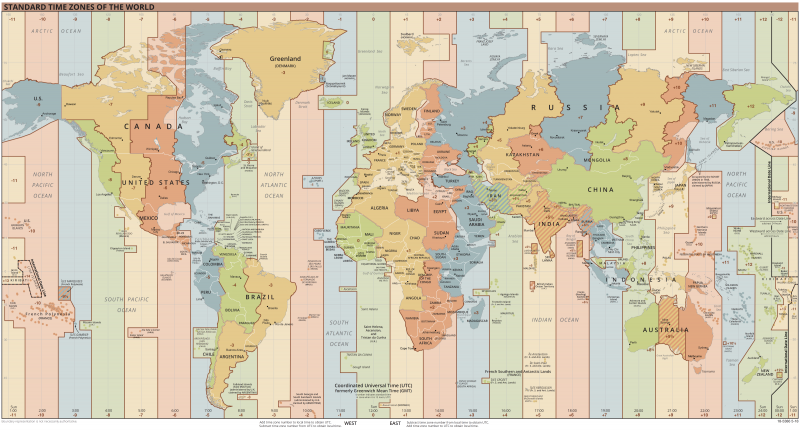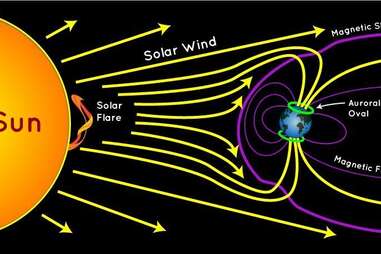
Previous threads about this topic:
Northern Lights/solar cycle 25 16 responses
Started by metmike - March 27, 2023, 1:42 a.m.
https://www.marketforum.com/forum/topic/94129/
++++++++++
THE EFFECTS OF A NUCLEAR EMP
Started by 12345 - Feb. 13, 2023, 1:04 p.m.
https://www.marketforum.com/forum/topic/93075/
+++++++++++++++
Previous, related discussions from natural events(CMEs).
The last thread has the most info.
New Sunspot may Hurl Dangerous Solar Flare at Earth Started by metmike - Oct. 3, 2022, 3:15 p.m.
https://www.marketforum.com/forum/topic/89419/\\
Geomagnetic storm coming
Started by metmike - Oct. 30, 2021, 2:30 a.m.
https://www.marketforum.com/forum/topic/76828/
GEOMAGNETIC STORM, SLIGHTLY DELAYED https://www.marketforum.com/forum/topic/76036/
The Carrington Event
12 responses |
Started by metmike - Aug. 28, 2021, 11 p.m. https://www.marketforum.com/forum/topic/74346/
+++++++++++++++++++++
Next event coming up in just over 2 days( late Wednesday Night):
We have a display coming up in the far northern tier of the US this week as well as all of Canada.
This is one way to track the Northern Lights forecast for a longer range period.
Go to this link below"
https://services.swpc.noaa.gov/text/27-day-outlook.txt

Compare the KP4 index with the colors on the maps at this link below. KP4 is the yellow color on the map which is what we expect very early on Thursday morning.
https://seetheaurora.com/kp-index-explained
Since we can't see the map underneath, it's clearly south of the US/Canadian border. It could be as far south as Indiana and there is always tremendous uncertainty on the magnitude of these events, which have been known to be seen 500+ miles farther south than the forecast zone.

Geomagnetic Storms
https://www.swpc.noaa.gov/phenomena/geomagnetic-storms
+++++++
We know about the disturbances a couple days before they hit because we see them on the sun 8 minutes after they happen.
It takes light from the sun 8 minutes to go 93 million miles to reach the earth.
https://phys.org/news/2013-04-sunlight-earth.html
https://www.pbs.org/seeinginthedark/astronomy-topics/light-as-a-cosmic-time-machine.html
But the solar wind ONLY travels at around 1 million miles per HOUR, which would mean around 93 hours to get to earth typically, which is almost 4 days(96 hours=24X4).
However, a disturbance or storm that ejects energy in the solar wind towards earth can accelerate the speed. The location on the sun makes a difference too.
The closer to the sun's equator, the slower the solar wind speed. Energy ejected from closer to the poles, results in the solar wind being faster.
https://en.wikipedia.org/wiki/Solar_wind
So the energy from an eruption can arrive in our magnetosphere in 3 days.
Also, a disturbance on the sun NOT facing the earth will travel out in a path that does not make contact with earth.
++++++++++++++
You can get additional information including a shorter term outlook from these links:

Space Weather Prediction Center
National Oceanic and Atmospheric Administration
https://www.swpc.noaa.gov/products/aurora-30-minute-forecast

https://www.gi.alaska.edu/monitors/aurora-forecast
A full moon will wash the sky with light and mess up an aurora display...NOT this time!
The highest latitudes at this time of year, don't have complete darkness and that wrecks the display too, no matter anything else.
Of course cloudy skies will block the view.
Fortunately, the phase of the moon is perfect for this aurora. I picked Indianapolis below which is one of the places farther south, expected to see the aurora if skies are clear. That far south, you will likely need to have a view of the northern horizon to see a display.
The uncertainty of events like this make me feel there's a chance for a display close to the northern horizon here in the southwest part of Indiana.........with crystal clear skies. Infortunately, there are alot of clouds in my forecast for that period )-:
There should still be numerous, potentially stronger events during the next year, as the strongest solar cycle in awhile heads towards a peak in 2024.
If you're outside before 2 am on the 13th or 14th to see the aurora, it will be BEFORE moonrise!!!
https://www.timeanddate.com/moon/usa/indianapolis
There will be at least 2 dozen additional posts here.
Solar storms are often not visible from much of the U.S.
https://abcnews.go.com/US/americans-rare-northern-lights-show-week/story?id=100962939
All the links and stories on this right now are telling us that Thursday Night is the night.
However, as mentioned previously, these forecasts are usually VERY uncertain. Unless I'm missing something, the updated forecast targets FRIDAY EVENING as the peak time, a delay of 1 day from the previous forecast.
https://www.swpc.noaa.gov/products/3-day-forecast
We should note that all times are in UNIVERSAL TIME(UT)..formerly GMT(Greenwich Mean Time). To convert Universal Time to EDT just subtract 4 hours. CDT, just subtract 5 hours. For Oregon -7 hours, Alaska it's -8 hours.
So 03-06 UT on July 15 above is actually 11pm-2am EDT, Friday Night-14th/Saturday Morning-15th.
That's 10pm-1am CDT. 8pm-11pm PDT(Oregon). 7pm-10pm(Anchorage AK).

https://en.wikipedia.org/wiki/Coordinated_Universal_Time
Coordinated Universal Time or UTC is the primary time standard by which the world regulates clocks and time. It is within about one second of mean solar time (such as UT1) at 0° longitude (at the IERS Reference Meridian as the currently used prime meridian) and is not adjusted for daylight saving time. It is effectively a successor to Greenwich Mean Time (GMT).
The coordination of time and frequency transmissions around the world began on 1 January 1960. UTC was first officially adopted as CCIR Recommendation 374, Standard-Frequency and Time-Signal Emissions, in 1963, but the official abbreviation of UTC and the official English name of Coordinated Universal Time (along with the French equivalent) were not adopted until 1967
++++++++++++
Here's another way to view it.
Since there are 360 degrees in the circular planet. Each time zone in the 24 hour day is broken up into 360 degrees/24 hours = 15 degrees longitude/time zone.

https://www.thrillist.com/news/nation/northern-lights-forecast-july-2023-aurora-borealis

metmike: Turns out that they will be a day later than this story states and may be at the original intensity.
The Northern Lights are peaking right now:
https://www.swpc.noaa.gov/products/3-day-forecast


Skygazers in some states along the U.S.-Canada border may get a glimpse of the northern lights, which — at their peak — produce a colorful sky show when solar wind hits the atmosphere.
Also known as aurora borealis, northern lights are most often seen in Alaska, Canada and Scandinavia, but an 11-year solar cycle that’s expected to peak in 2024 has the potential to make the lights visible in places farther to the south.
The Geophysical Institute at the University of Alaska Fairbanks has forecast auroral activity this week, based on long-term outlook.
Those in small slices of the contiguous U.S. — including parts of Wisconsin, Michigan and Montana — could also get a peek. But for them, the aurora will probably be a “faint glow on the horizon” said Lt. Bryan Brasher, a project manager for NOAA’s Space Weather Prediction Center. Auroral activity also has been forecast for Canada.
The National Oceanic and Atmospheric Administration’s Space Weather Prediction Center said people wanting to experience an aurora should get away from city lights and that the best viewing times are between 10 p.m. and 2 a.m. local time. NOAA’s forecast for tonight, July 14, is depicted in the graphic above.
+++++++++++++++++++
metmike: The current aurora activity seems to be too far north for us to see it into anywhere but right along the Canadian border.
https://www.swpc.noaa.gov/products/aurora-30-minute-forecast

+++++++++++++++++
Here are some pictures from Thursday Night:
The top one is in northern MN.


• by MagicDave131
Aurora Over Mt Si, WA 7/14/23 (OC)
OK, I just checked the visibility for these areas and we have a huge problem.
Conditions need to be perfect with crystal clear skies and most of the best areas have wildfire smoke from W.Canada in the skies, reducing visibility tonight.

https://map.purpleair.com/1/mAQI/a10/p604800/cC0#3.4/38.05/-87.53

Andrew McCarthy@AJamesMcCarthy
Here's a photo of Saturn I captured from my backyard last night. Have you ever seen it through a telescope? It was life-changing for me.
https://www.swpc.noaa.gov/products/weekly-highlights-and-27-day-forecast